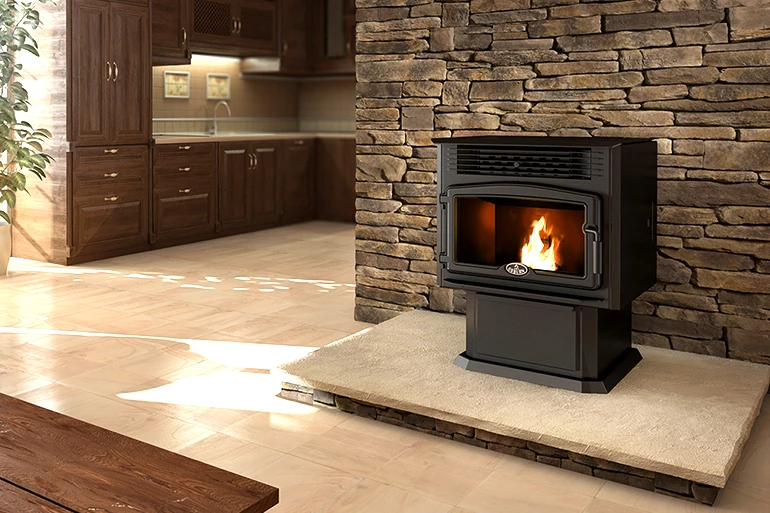Pellet Stoves Buyer's Guide
Want to find a cozy, heat efficient stove that is also eco-friendly and versatile? Pellet stoves meet these criteria. Being fairly complex appliances, it can be difficult to understand what you are getting with different wood pellet stove models. So, we've created a guide to walk you through what you need to know to make the best decision for your home.
You'll find lots of information in this article. We explain how a pellet stove works and how the pellets are made. We even offer price comparisons for different model variations. We explore technical details about maintenance, BTU output, and top brands to help you find the stove that's right for you.
What is a Pellet Stove?
A pellet stove is much like a wood-burning stove, but instead of logs, it burns pellets. Wood pellets are carefully prepared and dried to an ideal moisture content. This makes it easier to maintain a predictable burn and achieve optimal combustion. Because of that, pellet stoves for sale can be treated more like a central heating furnace than a traditional wood stove. This results in a more efficient, cost-effective appliance.
Their relatively simple maintenance procedures are another major appeal. Several models also regulate the burn rate automatically to maintain your desired room temperature. This can be done via a built in control panel and with some models, a wall thermostat or remote control.
Ready to find the perfect stove? You can start narrowing down your options by deciding what type of fuel you prefer and the size you need. You will also need to decide if you require a model that can operate without a conventional 120-volt power source. This will help you decide on the cost and maintenance you are willing to invest. Let's start with fuel.
Pellet Fuel
Wood pellet fuel consists of byproducts from sawmill operations. Bark, sawdust, and other scraps deemed unsuitable for lumber are ground down, cleaned, and then pressed into special dies. This process produces specific sizes and moisture contents. The naturally occurring lignin in the wood fiber works as an adhesive of sorts, activated by steaming the pellet material during the cleaning process. When forced through a pellet die, the result is a very uniformly sized pellet with ideal moisture content, perfect for a controlled burn.
Some models allow other biomass material such as corn or cherry pits to be burned. But, you should always make sure that your stove accommodates these alternative fuels. Most models of pellet stove that are designed to burn these types of biomass will be labeled as "multi-fuel" models. Because shelled corn or grass pellets can be cheaper than wood pellets, it can be an enticing option. If your stove can burn alternative fuels, you may need to service it more frequently due to the higher sugar content which tends to create more ash and clinkers.


